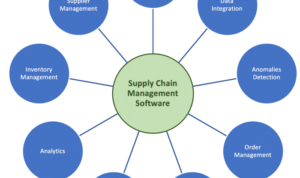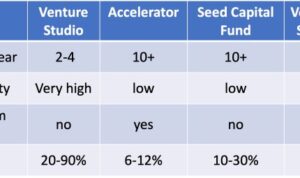Financial forecasting sets the stage for effective business planning and decision-making, exploring the ins and outs of predicting financial trends and outcomes. Dive into the world of financial forecasting with this ultimate guide.
Overview of Financial Forecasting
Financial forecasting is a crucial aspect of business planning that involves predicting future financial outcomes based on historical data and trends. It helps organizations make informed decisions, set realistic goals, and allocate resources effectively.
Importance of Financial Forecasting
- Anticipating Financial Needs: By forecasting revenues and expenses, businesses can plan for future capital requirements and avoid cash flow shortages.
- Strategic Planning: Financial forecasting enables companies to develop long-term strategies, identify growth opportunities, and mitigate risks.
- Performance Evaluation: Comparing actual results with forecasted figures helps assess business performance and make necessary adjustments to achieve desired outcomes.
Objectives of Financial Forecasting
- Revenue Forecasting: Estimating future sales and revenues to set sales targets and pricing strategies.
- Expense Forecasting: Predicting costs and expenses to control spending and improve profitability.
- Cash Flow Forecasting: Projecting cash inflows and outflows to ensure liquidity and financial stability.
Key Components of Financial Forecasting
- Historical Data Analysis: Reviewing past financial performance to identify trends and patterns that can be used to make future predictions.
- Assumptions and Factors: Considering internal and external factors such as market conditions, economic indicators, and business strategies that may impact financial outcomes.
- Forecasting Methods: Utilizing quantitative techniques like regression analysis, time series analysis, and scenario planning to generate accurate predictions.
Methods of Financial Forecasting

Financial forecasting involves the use of various methods to predict future financial outcomes. These methods can be broadly categorized as quantitative and qualitative approaches, each with its own set of strengths and weaknesses.
Quantitative Methods
Quantitative methods rely on historical financial data to make predictions about future performance. Two common quantitative methods used in financial forecasting are time series analysis and regression analysis.
- Time Series Analysis: This method involves analyzing past data points to identify patterns and trends that can help predict future financial performance. By examining historical data such as sales figures or stock prices, analysts can forecast future trends and make informed decisions.
- Regression Analysis: Regression analysis is a statistical technique that examines the relationship between variables to predict future outcomes. By analyzing the correlation between different financial variables, such as sales and marketing expenses, analysts can develop predictive models to forecast future financial performance.
Qualitative Methods
Qualitative methods rely on non-numerical data and subjective judgments to make financial forecasts. These methods include expert opinions and market research.
- Expert Opinions: Expert opinions involve gathering insights from industry experts or financial analysts to make predictions about future financial performance. While expert opinions can provide valuable insights, they are subjective and may be influenced by biases or personal opinions.
- Market Research: Market research involves gathering data from customers, competitors, and industry trends to make informed predictions about future financial performance. By analyzing market trends and consumer behavior, analysts can forecast future sales and revenue projections.
Comparison of Methods
When comparing quantitative and qualitative methods of financial forecasting, each approach has its own strengths and weaknesses. Quantitative methods are based on historical data and statistical analysis, providing a more objective and data-driven approach to forecasting. However, quantitative methods may fail to account for external factors or unforeseen events that can impact financial performance.
On the other hand, qualitative methods allow for subjective insights and expert opinions to be considered in financial forecasts. While qualitative methods can provide valuable qualitative insights, they may lack the rigor and objectivity of quantitative analysis. Additionally, qualitative methods can be influenced by biases or personal opinions, leading to less accurate predictions.
Overall, a combination of both quantitative and qualitative methods may provide a more comprehensive and accurate financial forecast by leveraging the strengths of each approach while minimizing their weaknesses.
Factors Influencing Financial Forecasting
Financial forecasting is influenced by a variety of factors, both internal and external. These factors play a crucial role in the accuracy and reliability of financial projections.
Internal Factors
Internal factors such as historical financial data and management decisions have a significant impact on financial forecasting. Historical financial data provides insights into past performance, trends, and patterns that can be used to make future predictions. Management decisions, including investment strategies, cost-cutting measures, and expansion plans, also influence financial forecasts.
External Factors
External factors, on the other hand, are factors outside the control of the organization but still impact financial forecasting. Economic trends, such as inflation rates, interest rates, and GDP growth, can affect the overall financial landscape and the organization’s performance. Industry regulations, changes in government policies, and market competition also play a role in shaping financial forecasts.
Technological Advancements
Technological advancements have revolutionized financial forecasting by providing access to advanced tools and software that streamline the forecasting process. Automation, data analytics, and artificial intelligence help improve the accuracy and speed of financial projections. These technological advancements enable organizations to make more informed decisions based on data-driven insights.
Tools and Software for Financial Forecasting

Financial forecasting tools and software play a crucial role in helping businesses make informed decisions about their future financial performance. These tools provide advanced functionalities that streamline the forecasting process and improve accuracy. Let’s dive into some popular tools and software used for financial forecasting:
Excel, Financial forecasting
Excel is one of the most widely used tools for financial forecasting due to its flexibility and versatility. It allows users to create complex financial models, perform data analysis, and generate forecasts based on historical data. Excel offers various functions and formulas that make it easier to manipulate and analyze financial data.
Tableau
Tableau is a powerful data visualization tool that helps in creating interactive and dynamic dashboards for financial forecasting. It enables users to visualize complex financial data in an intuitive way, making it easier to identify trends, patterns, and outliers. Tableau’s drag-and-drop interface allows users to explore data quickly and efficiently.
SAP
SAP is an enterprise resource planning (ERP) software that includes financial forecasting capabilities. SAP integrates financial data from various departments within an organization, providing a holistic view of the company’s financial health. It offers advanced forecasting features, such as predictive analytics and scenario planning, to help businesses make strategic decisions.
These tools streamline the financial forecasting process by automating calculations, generating reports, and providing real-time insights. By leveraging the features and functionalities of these tools, businesses can improve the accuracy of their forecasts and make well-informed decisions to drive growth and profitability.





